Excuses, excuses...
She's baaaaacckkkk.....
Those of you who have been following along on this adventure for some time may be getting pretty tired of waiting for something new to read. New folks who have just recently stumbled upon this investigation, may be wondering if the subject matter — or the authoress, for that matter — has gone dormant. Well, it hasn’t and I haven’t and it has been almost six months since I spent time in London, reading Crowley’s unpublished diaries, shopping lists, and accounts at The Warburg Institute, with barely three entries since that time (when you know I ate and visited a lot more restaurants than just these three). I wanted to share with you a little of what has been happening in the interim, and to assure you that there has been a delightful kick-start to the research which just fills me with glee.
When I came back from London in January, I was giddy with enthusiasm for all the information I found. In fact, I took over seven-hundred (700!) photographs of both hand-written and typed (by Yorke, no doubt) notes, journal entries, poems, and menus. To give you an idea, there are five catalogues of the Yorke holdings, and there is a catalogue of the catalogues that is almost 50 pages long, just trying to list what is there and where to find it. This photo was taken as I tried to document every photograph I took (the NS numbers are from the “New Series” of cataloguing, while the “OS” numbers are from the ‘Original Series” which has yet to be organized). Oh, and this photograph? They forgot to ask me to fill this out until my second or third day…
Back home with all these amazing images, I tried to start organizing them. This involved reading them, seeing where the topic might fall in a timeline, cross-reference with any food item mentioned or meal served, and with a proper name that may have been mentioned. Needless to say, 700-plus images proved to be a daunting task and each day, it was easier to take care of some other chore than decipher pixilated, hand-written copy. You did get to read three accounts of some of the historical restaurants frequented by Crowley during his time in London.
Just as February was waning into March, an unexpected email arrived in my in-basket: A referral from a pretty famous culinary historian, Ken Albala to The Getty Museum in Los Angeles, asking if I might be interested in putting together a lecture in conjunction with a featured exhibition of Gustave Caillebotte, ostensibly an Impressionist, but far more interesting. A few phone calls and brainstorming sessions later, it was decided I would not only create a discussion about Caillebotte, and his circle of friends, fellow painters, and noted authors all of whom shaped the artistic and literary landscape of late 1800s Paris, but I would collaborate with the Getty’s catering team to develop a menu that would be served to seventy or eighty people inspired from the artwork of the era.
All this revolved the food and drink, as both sustenance and subject matter for art, essays, and novels. After the talk, guests were invited to the luncheon I had curated, where we dined on scrumptious offerings of pâté, cheeses, roast duck, cod fritters, and delectable desserts, while sipping a bounty of libations all of which would have been part of the Belle Epoque in Paris (about the same time that Crowley would have arrived in 1897, at the age of 21). While straying ever-so-slightly away from my Crowley focus, it was undeniably valuable research that will be shared in the future.
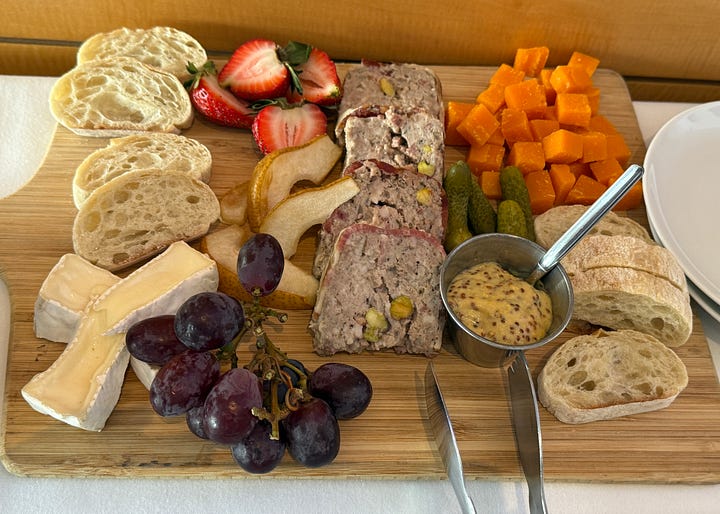

While negotiating the Getty event and confirming presentation dates, I received a phone call from an old friend in Los Angeles who was yet another culinary historian, Richard Foss, who had attended one of my first art dinners way back in 1999; the cooking and serving of ten courses from Salvador Dalí’s Les Diners de Gala. Most recently, Foss had wandered into a newly-opened gallery in Torrance, saw they were getting ready for a Surrealist exhibition, and convinced the gallery owners they should stage a Salvador Dalí dinner event, with me at the helm. Gosh-by-golly, I was going to be in Los Angeles anyway for Mother’s Day weekend for the Getty and - sure! - I’d be happy to put together another event while I’m there…
On cloud nine and a bit overwhelmed at the fortuitous turn of events, I then read about a writer’s conference, the M.F.K. Women in Food & Storytelling Symposium sponsored by Les Dames d’Escoffier (of which I am a member — or “Dame,” as it were), being held the first weekend of April in Nashville. The gods were in agreement; it was time for me to up-my-game and start learning what was going to be needed to bring not only The Culinary Crowley to fruition, but several other books that in the back of my head. The three days I spent in Nashville taught me more about the publishing industry, agents, editing, and overcoming writer’s block than I knew possible, bringing a lightening bolt of energy and enthusiasm towards this work and more.
Hilariously, while in Nashville, I received an email from The Getty, informing me they cleared the budget hurdle for Absinthe to be a part in the tasting event, along with the three wines already part of the line up. The email included some bottle images of potential offerings, asking which one I might recommend. My personal favorite absinthe is Clandestine Le Bleu from Switzerland, and was not one The Getty could get. At the conference, several of us were deciding on dinner plans when the Absinthe email arrived, and I quickly googled “absinthe Nashville,” delighted to discover The Green Hour, a cocktail bar specializing in the very thing I needed to research. (l’Heure Verte was the phrase used in late 1800s Paris for that time at the end of day, when everyone would leave their homes, studios, and offices, socialize at their local café, and start the evening with an absinthe, before dinnertime).
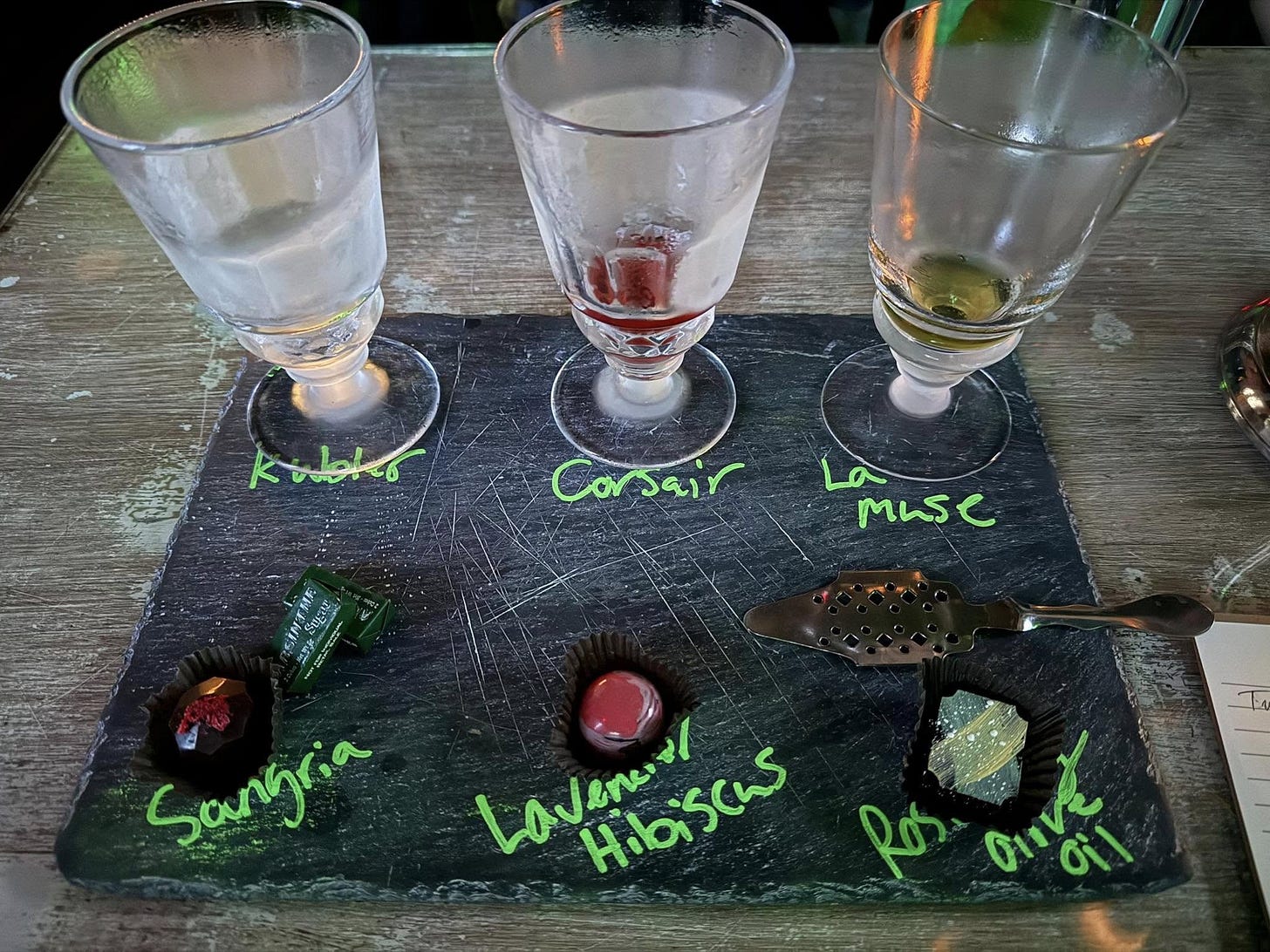
April was Nashville and getting my creative spark re-lit and professionally directed. May was Los Angeles with its Impressionists and French cuisine at The Getty, as well as the Surrealists, Salvador Dalí, and lobsters at VEFA Gallery. June? June was another presentation, this time requested by someone who had heard about my Culinary Crowley research, a member of the Odd Fellows of Half Moon Bay who wanted a talk about Food as Ritual. Who was I to say no?
With the year half over, where does that leave us insofar as moving forward with the Culinary Crowley? Much better along than would be expected, for I made a groundbreaking (for me) discovery: Artificial Intelligence and how it can help in my research. One of the biggest time-sucks in all the world when preparing PowerPoint presentations (especially for an institution like The Getty, who requires the highest resolution images possible, and no copyright infringement), is the dreary internet searches of specific artwork. This is especially true when search engines like Google return results that are wholly and entirely veering you towards websites of commerce. Want that image of Claude Monet’s still life of Gallettes? Here it is as a tote bag, or a t-shirt, or as a framed poster. Oh, but its resolution is still only 300x400 dpi. Ask ChatGPT to find a high resolution, copyright free version, and suddenly you are scrolling through the website of some obscure, tiny museum in the South of France who happens to have the very painting you need, and provides creative commons links for anyone to access the artwork. Thrilling, huh? It is for me and this is why:
With the 700-plus photographs I took during my time in the Crowley archives, I can now have them transcribed and ask to have any food or dining words highlighted, as well as any proper names that are mentioned. My first attempt was a letter to Crowley from Auguste Rodin. Written in French, I not only got a transcription, but a translation. My brief foray into A.I. already produced some noticeable errors, so I know well not to trust the results 100%, but even being able to search for specific terms gastronomic terms like, say, “Champagne,” will lead me down a merry path I am happy to skip.

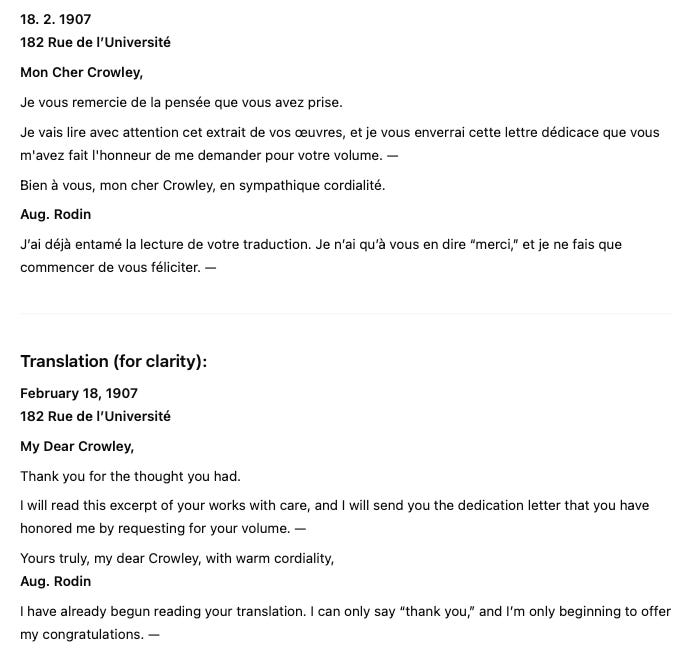
The mind boggles at the possibility, and if I were sitting on a boatload of money, I’d set up an endowment to have all of the entirety of the Yorke Collection digitized, transcribed, and available to the public. In the meantime, I will at least be able to move forward with my research much more quickly and expeditiously. Thank you all for your kind patience and understanding during what may have felt like a fallow period, but has proven remarkably productive.
93 93/93
Carrie


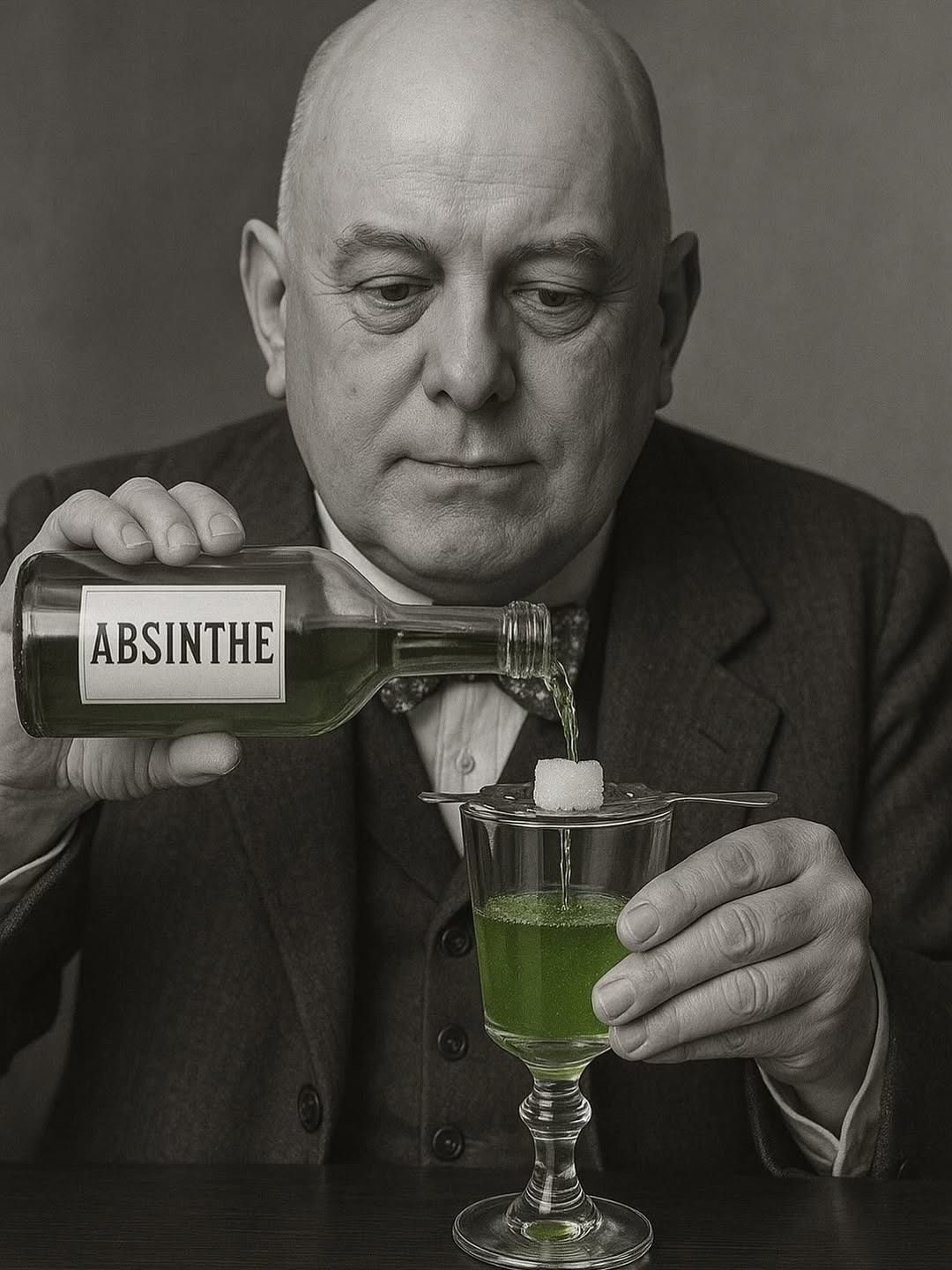
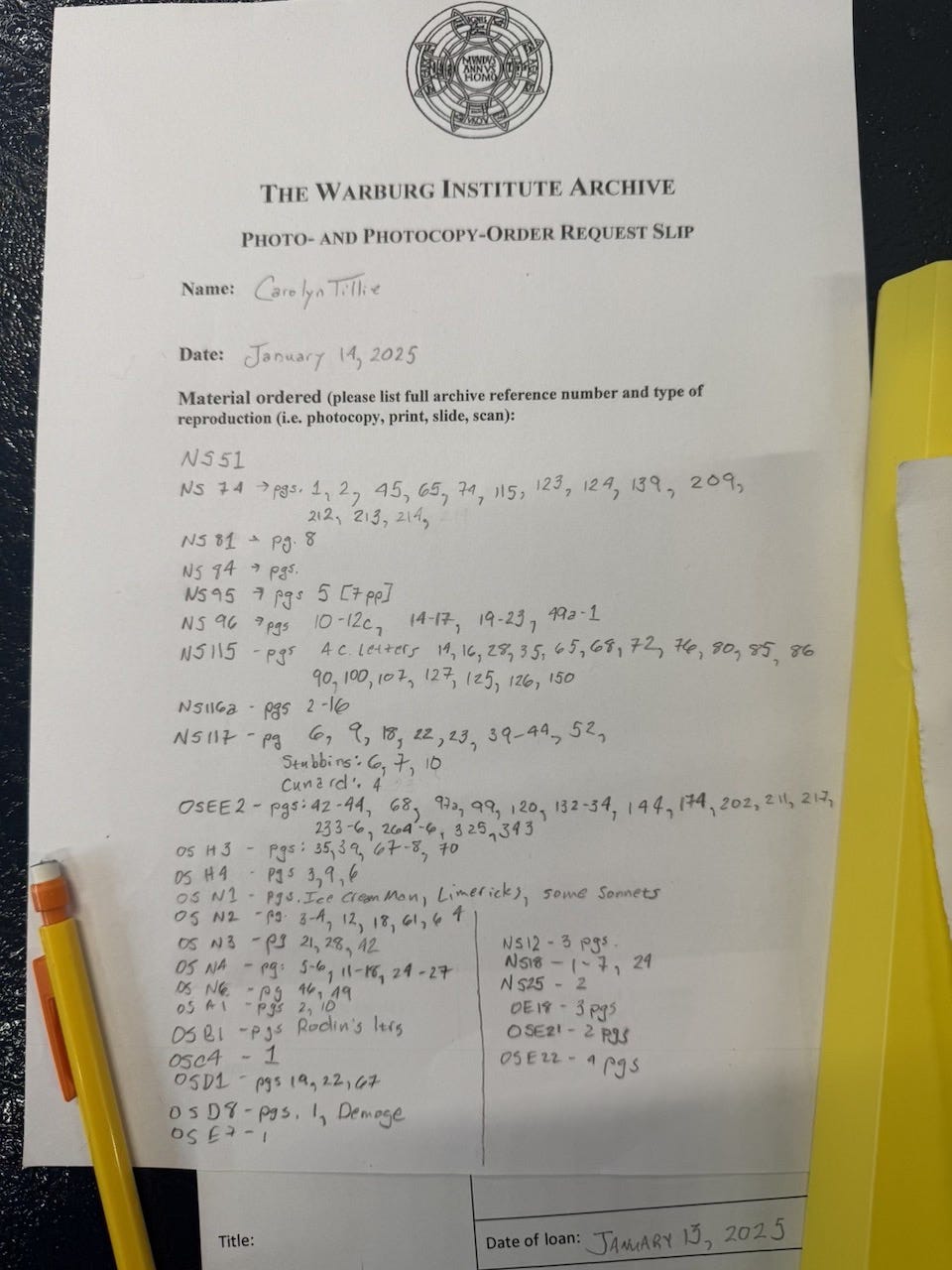
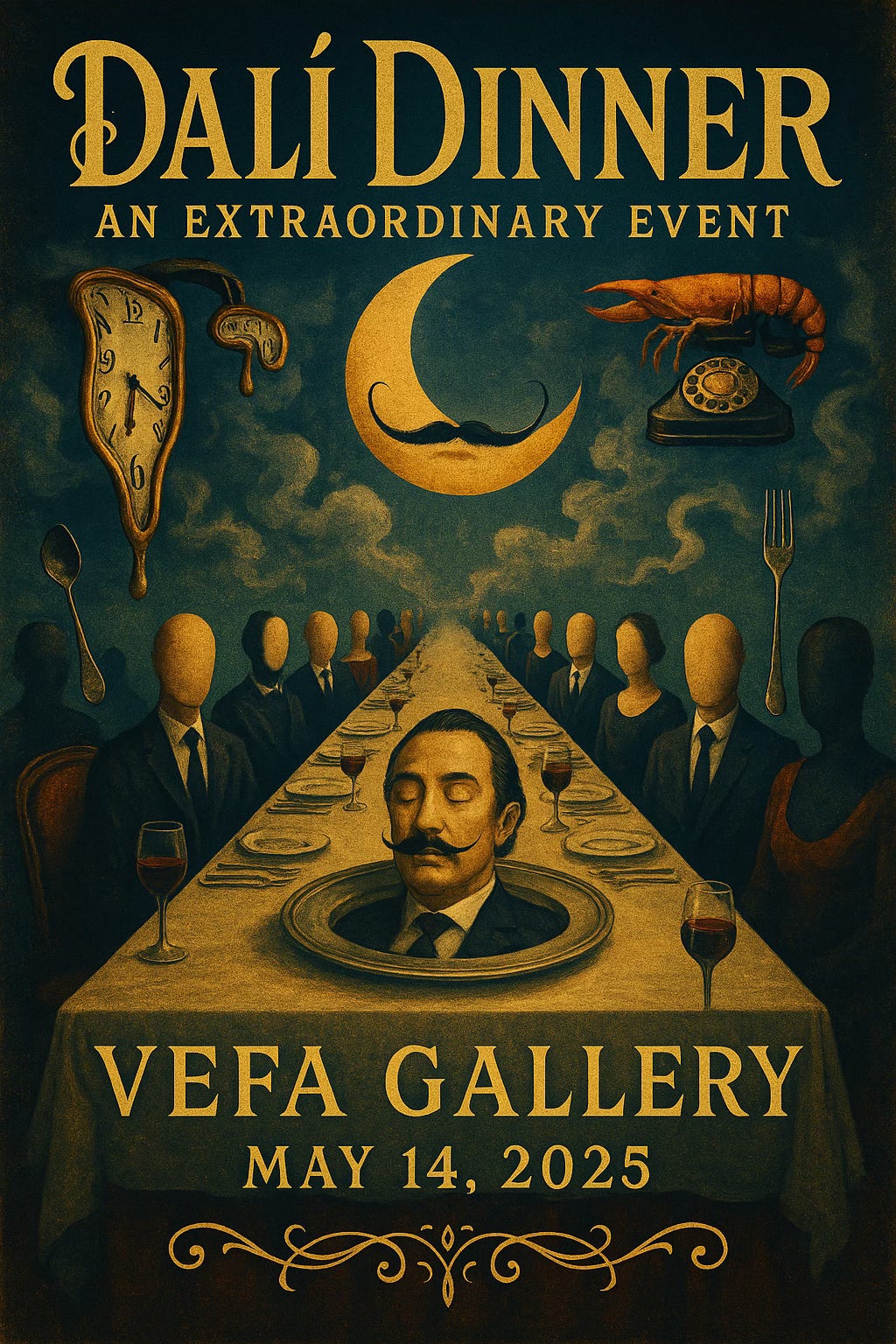
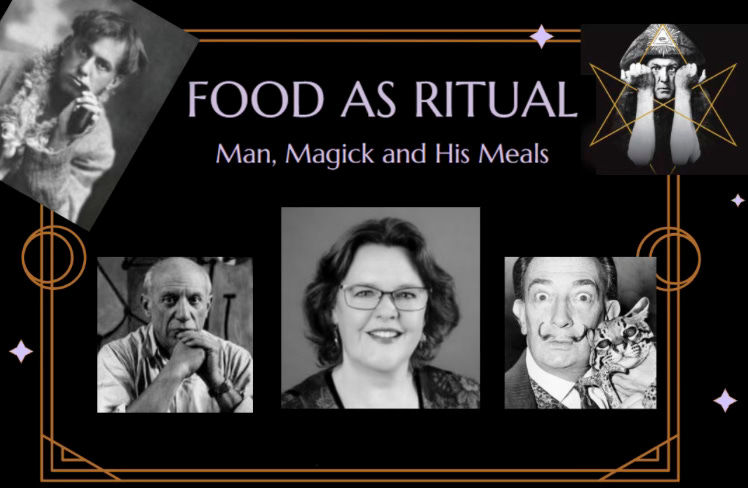
What a whirlwind, Carrie!
What a whirlwind indeed! So proud of you!